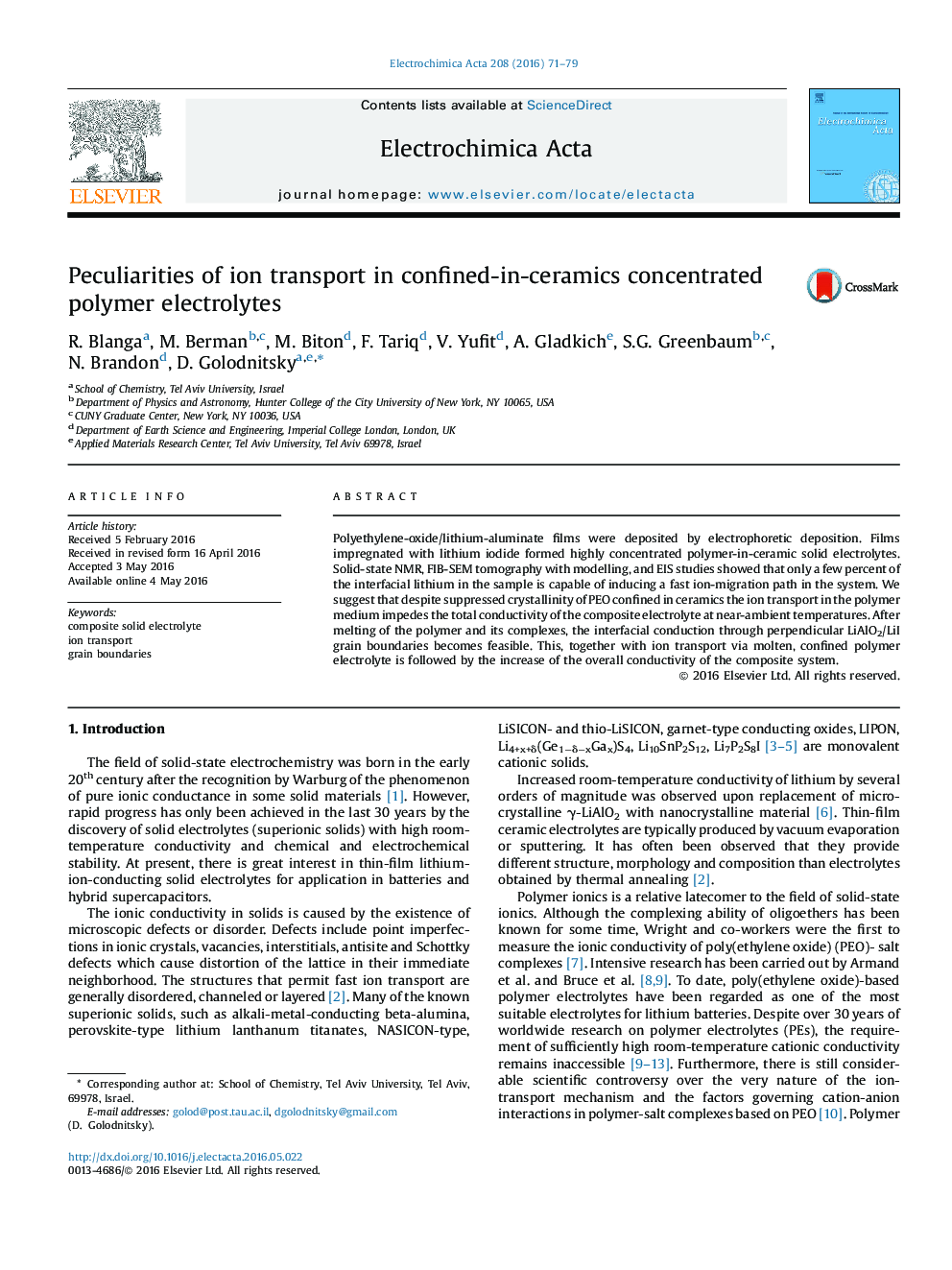| Article ID | Journal | Published Year | Pages | File Type |
|---|---|---|---|---|
| 182920 | Electrochimica Acta | 2016 | 9 Pages |
Polyethylene-oxide/lithium-aluminate films were deposited by electrophoretic deposition. Films impregnated with lithium iodide formed highly concentrated polymer-in-ceramic solid electrolytes. Solid-state NMR, FIB-SEM tomography with modelling, and EIS studies showed that only a few percent of the interfacial lithium in the sample is capable of inducing a fast ion-migration path in the system. We suggest that despite suppressed crystallinity of PEO confined in ceramics the ion transport in the polymer medium impedes the total conductivity of the composite electrolyte at near-ambient temperatures. After melting of the polymer and its complexes, the interfacial conduction through perpendicular LiAlO2/LiI grain boundaries becomes feasible. This, together with ion transport via molten, confined polymer electrolyte is followed by the increase of the overall conductivity of the composite system.
